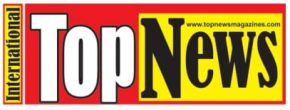 First Bank Plc, a leading financial institution, had an upsurge in price appreciation moving 14.6 percent during the week.
First Bank Plc, a leading financial institution, had an upsurge in price appreciation moving 14.6 percent during the week.
Many stock analysts believed the bank still holds good fundamentals.
By this, Year-to-Date (YtD) returns on investment crossed over the 100 percent leading territory.
The movement in YtD was coming after three trading days of lack-luster reaction to the bank’s 9-month financial results which saw the stock price in a temporal 0.8 percent appreciation and it lost the gains the next trading day. However, the bulls took over on Tuesday last week leading to a 26.5 percentage points rise in YtD from week’s opening point of 80.9 percent. Many stock analysts believed the bank still holds good fundamentals that may have warranted the upsurge in investor sentiment despite the challenges in its financial records. They also see some green shoots in the recent financial results.
The bank’s 9M’17 results show that despite the high base of prior year, gross earnings rose by 5.6% year-on-year (YoY) to N441.4 billion in 9M’17 on the back of sustained growth in interest income (+27.8% YoY). After tax earnings increased by 7.8% to N45.8 billion as the bank recorded lower tax expense (9M’17: 17.3% Vs. 9M’16: 25.9%). Quarterly, profit after tax, PAT, went up by 22.6% to N16.4 billion, buoyed by a growth of 32.4% quarter-on-quarter (QoQ) in non-interest income. But non-interest income fell by 38.9% to N85.3 billion in 9M’17 as a result of one-off FX revaluation gains recorded in prior year. Sequentially, non-interest income, however, increased by 32.4% QoQ to N34.8 billion in Q3’17. Impairment charges declined by 14.9% YoY to N97.6 billion while it rose marginally by 4.7% QoQ. Conversely, NPL ratios improved further to 20.1% in Q3’17 from 22.8% and 26.0% in Q2’17 and Q1’17 respectively, as the bank wrote off previously provisioned NPLs. Whilst net loans declined marginally by 1.9% to N2.0 trillion, total asset and net asset increased by 2.7% and 20.7% to N4.9 trillion and N631.1 billion respectively in 9M’17.
Further analysis show that the growth in earnings was aided by growth in funding income which increased by 7.73% QoQ and 17.43% YoY, and this more than subdued the 6.57% and 37.91% YoY contraction in NIR coming above consensus estimate by 13.30%. Also the earnings performance was aided by a decline in operating expenses, OPEX, by 3.51% QoQ, though it ticked up 2.27% YoY. The contraction in NIR stemmed from significant declines in dividend income (- 50.62% QoQ and +119.18% YoY), net gains on foreign exchange income (- 72.86% QoQ and -96.16% YoY), net gains on investment securities (-259.215 QoQ and -270.29% YoY), net fee income (-7.95% QoQ and -3.77% YoY), net insurance premium (-33.44% QoQ and -23.79% YoY), and net gains on financial instruments (-37.77% QoQ and -13.82% YoY). Consequently, the cumulative impact more than offset the surge in other income (+233.80% QoQ and +209.68% YoY). Despite 190 basis points (bps) contraction in NPL to 20.10% compared to half year 2017, annualized cost of risk remains elevated, rising 20 bps to 5.60% (annualized) following additional provisioning of N35.18 billion in Q3-17, which raised total loan loss provision during the period to N97.69 billion, albeit 14.93% lower compared to N114.72 billion in 9M-16.
However, noteworthy is the 90.08% YoY growth in net recoveries from loans previously written off (with an additional recovery of N1.32 billion over Q3) which financial analysts believe reflects the gradual improvements in the general commerce and manufacturing sectors following increased FX liquidity. First Bank reported capital adequacy ratio (CAR) of 17.8% for the bank in full year 2016 and 17.6% for first half 2017.
Though relative to both periods, CAR contracted to 17.2% in 9M-17, this is still largely above the required regulatory minimum of 16% for systemically important banks. Expectations for FY‘17 The largely positive sentiments on First Bank’s stock is premised on the bank’s good brand equity and strong financials.




